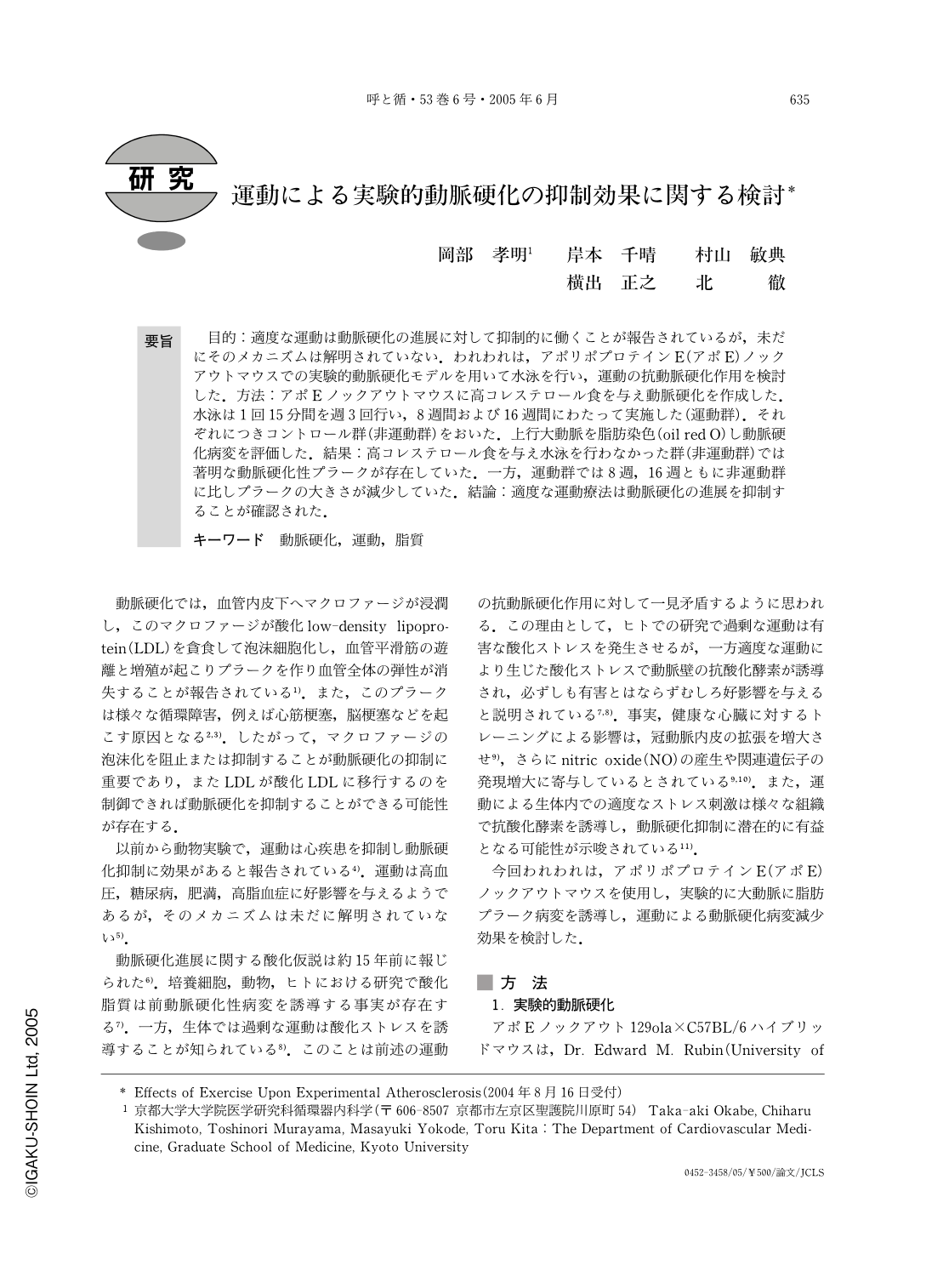Japanese
English
- 有料閲覧
- Abstract 文献概要
- 1ページ目 Look Inside
要旨 目的:適度な運動は動脈硬化の進展に対して抑制的に働くことが報告されているが,未だにそのメカニズムは解明されていない.われわれは,アポリポプロテインE(アポE)ノックアウトマウスでの実験的動脈硬化モデルを用いて水泳を行い,運動の抗動脈硬化作用を検討した.方法:アポEノックアウトマウスに高コレステロール食を与え動脈硬化を作成した.水泳は1回15分間を週3回行い,8週間および16週間にわたって実施した(運動群).それぞれにつきコントロール群(非運動群)をおいた.上行大動脈を脂肪染色(oil red O)し動脈硬化病変を評価した.結果:高コレステロール食を与え水泳を行わなかった群(非運動群)では著明な動脈硬化性プラークが存在していた.一方,運動群では8週,16週ともに非運動群に比しプラークの大きさが減少していた.結論:適度な運動療法は動脈硬化の進展を抑制することが確認された.
Summary
(Aim) It was reported that moderate exercise training protects against the development of atherosclerosis. However, the precise mechanisms of this phenomenon are still unknown. Here, we showed the effect of moderate exercise training on experimental atherosclerosis in apolipoprotein E-deficient mice. (Methods) We forced swimming training on the mice for 15 minutes everyday, 3 times per week, and fed then with high fat diets for 8 weeks or 16 weeks(training groups), and the results were compared with those of control groups(non-training group). (Results) Non-training groups had significant plaques. But training groups had reduction of plaques compared with non-training groups at both periods. (Conclusion) It was shown that moderate exercise training suppresses the development of experimental atherosclerosis in apo E-deficient mice.

Copyright © 2005, Igaku-Shoin Ltd. All rights reserved.


